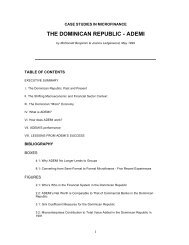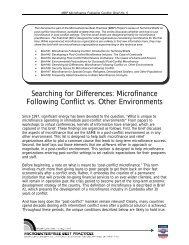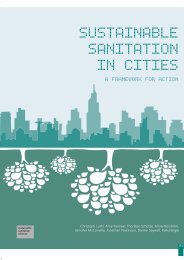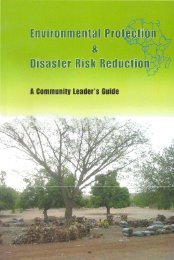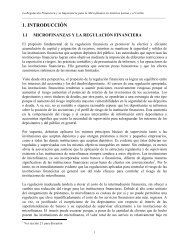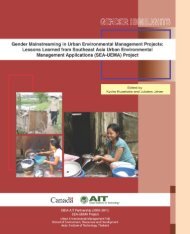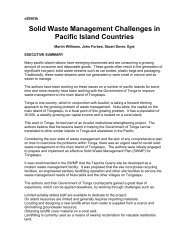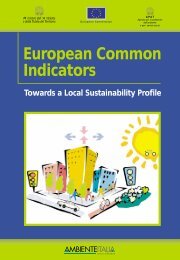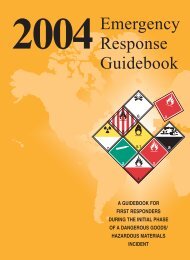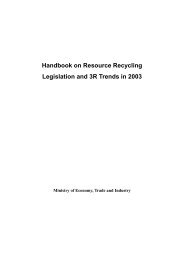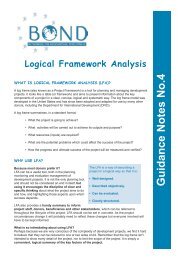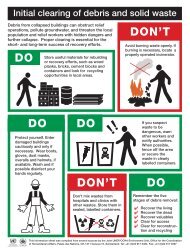The International Implementation Scheme (IIS) - Unesco
The International Implementation Scheme (IIS) - Unesco
The International Implementation Scheme (IIS) - Unesco
Create successful ePaper yourself
Turn your PDF publications into a flip-book with our unique Google optimized e-Paper software.
DESD <strong>International</strong> <strong>Implementation</strong> <strong>Scheme</strong> (<strong>IIS</strong>)<br />
lifeskills. ESD promotes those same outcomes, such as the skills to go on learning, to think<br />
critically, to work together, and to search out and apply knowledge. Learners are then better<br />
equipped to make decisions leading to sustainable development. Also, and therefore, the vision<br />
and values of sustainable development must be a component of quality education.<br />
2.3 Key characteristics of Education for sustainable development<br />
Education for sustainable development must share the characteristics of any high-quality<br />
learning experience, with the additional criterion that the process of learning/teaching must<br />
model the values of sustainable development itself. <strong>The</strong>se characteristics echo the areas of<br />
concern in the implementation of EFA Goal 6 which aims to offer to all an education of quality<br />
leading to excellence and measurable learning outcomes.<br />
Education for sustainable development should not be equated with environmental education.<br />
<strong>The</strong> latter is a well-established discipline, which focuses on humankind’s relationship with the<br />
natural environment and on ways to conserve and preserve it and properly steward its<br />
resources. Sustainable development therefore encompasses environmental education, setting it<br />
in the broader context of socio-cultural factors and the socio-political issues of equity, poverty,<br />
democracy and quality of life. <strong>The</strong> development perspective – that of social change and evolving<br />
circumstances – is also a central to any treatment of sustainable development. <strong>The</strong> set of<br />
learning goals of sustainable development are thus wide-ranging. Sustainable development<br />
must be integrated into other disciplines and cannot, because of its scope, be taught as a<br />
discreet subject.<br />
Education for sustainable development will aim to demonstrate the following features:<br />
•<br />
•<br />
•<br />
•<br />
•<br />
•<br />
•<br />
Interdisciplinary and holistic: learning for sustainable development embedded in the<br />
whole curriculum, not as a separate subject;<br />
Values-driven: it is critical that the assumed norms – the shared values and principles<br />
underpinning sustainable development – are made explicit so that that can be<br />
examined, debated, tested and applied;<br />
Critical thinking and problem solving: leading to confidence in addressing the dilemmas<br />
and challenges of sustainable development;<br />
Multi-method: word, art, drama, debate, experience, … different pedagogies which<br />
model the processes. Teaching that is geared simply to passing on knowledge should be<br />
recast into an approach in which teachers and learners work together to acquire<br />
knowledge and play a role in shaping the environment of their educational institutions;<br />
Participatory decision-making: learners participate in decisions on how they are to learn;<br />
Applicability: the learning experiences offered are integrated in day to day personal and<br />
professional life.<br />
Locally relevant: addressing local as well as global issues, and using the language(s)<br />
which learners most commonly use. Concepts of sustainable development must be<br />
carefully expressed in other languages – languages and cultures say things differently,<br />
and each language has creative ways of expressing new concepts.<br />
<strong>The</strong> role of science and technology deserves highlighting as science provides people with ways<br />
to understand the world and their role in it. ESD needs to provide a scientific understanding of<br />
sustainability together with an understanding of the values, principles, and lifestyles that will lead<br />
to the transition to sustainable development. Science should be regarded broadly to include<br />
social sciences as well as natural sciences and traditional approaches to learning and<br />
understanding as well as formal science. Technology provides people with the tools to change<br />
their situation as results of learning and expression. Technology should also be regarded<br />
broadly to include traditional use of materials and application of knowledge as well as<br />
manufactured items. Technology must be applied consistently with the goals of sustainability;<br />
18<br />
2005



